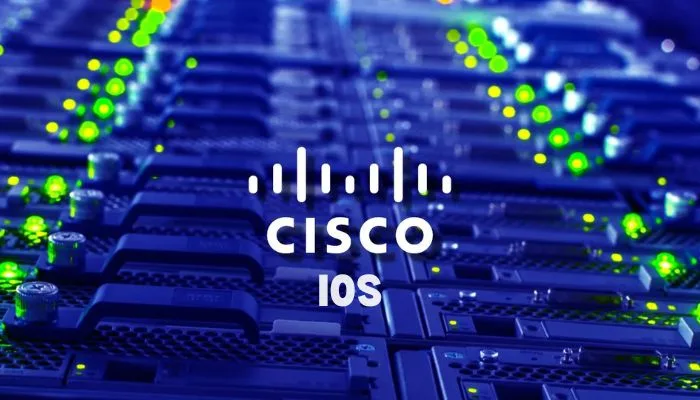Table of Contents
What is Network Operating Systems
A Network Operating System, or NOS, is essentially a specialized computer operating system designed to facilitate communication and resource sharing among workstations, PCs, and even older terminals within a Local Area Network (LAN). While you might think of it as a standalone entity, it’s crucial to note that most modern operating systems now incorporate network support features, making the traditional NOS less prevalent. Nevertheless, understanding its core functions is essential.
A typical NOS serves as the conductor of a network orchestra, coordinating the activities of various devices such as PCs, printers, file servers, and databases within a local network. Its primary responsibility is to provide fundamental network services that allow for the simultaneous handling of multiple input requests in a multi-user environment.
Functions of Network Operating System
- User Profile Management: NOS establishes and maintains user profiles on the network, ensuring that users have controlled access to network resources.
- Access Control: It regulates and controls who can access specific network resources, enhancing network security.
- Resource Configuration: NOS manages and configures the network’s resources to optimize functionality.
- Protocol Utilization: To enhance network operations, NOS employs various protocols over the network.
- Secure Workstation Connections: By implementing access management and user authentication, NOS ensures secure connections between workstations.
Types of Network Operating Systems
There are two fundamental types of Network Operating Systems:
- Peer-to-Peer (P2P) Network OS: In the P2P architecture, network resources are shared from a common, accessible location. All devices within this network structure are treated equally in terms of functionality. P2P is an ideal choice for small and medium-sized LANs, as it is cost-effective and straightforward to set up.
- Client-Server Network OS: Unlike P2P, the client-server model provides users with resource access through a central server. This architecture unifies all functions and applications under one file server, enabling individual client actions from any physical location. While it’s more expensive to establish and maintain, the client-server model offers centralized network control, making technology changes and additions easier to implement.
1. Peer-to-Peer Network Operating System
In a peer-to-peer network, all devices share equal responsibility and authority over data processing. There is no hierarchy among the devices, resulting in a lack of master-slave relationships. This type of NOS is ideal for smaller setups with up to 25 workstations, allowing computers to share resources such as scanners, printers, and CD-ROMs. Each machine in the network manages user accounts and security settings, and due to the absence of a centralized login system, there is limited protection among workgroups.
Learn What is peer-to-peer (P2P)
Advantages of Peer-to-Peer Network Operating System
- Low upkeep and setup costs.
- No need for specialized devices.
- User-controlled resource sharing within the network.
Disadvantages of Peer-to-Peer Network Operating System
- Lower security due to share-level protection.
- Network performance declines as it expands.
- Limited user access control and security features.
2. Client-Server Network Operating System
This type of NOS features a client-server architecture where clients and servers share the network load. The server handles requests for printing, document storage, and other services, while a database stores the information viewed by multiple networked computers. Clients send database requests to the server, which processes them and transmits the results across the network.
Learn What is the Client-Server Model?
Advantages of Client-Server Network Operating System
- Enhanced security with a centralized data security mechanism.
- Even distribution of network workload.
- Suitable for larger network areas and remote access.
Disadvantages of Client-Server Network Operating System
- Higher operational costs and the need for trained network administrators.
- Network failure if a server experiences issues.
- Increased expenses due to server maintenance and resources.
Some Network Operating Systems
Several Network Operating Systems have made their mark in the tech world, each catering to distinct needs and preferences. Here are a few notable examples:
- Microsoft Windows Server: Microsoft’s Windows Server is renowned for its robust functionalities, stability, and high-security standards, making it ideal for enterprise-level operations, data storage, networking, and application hosting.
- Unix OS: Unix, originally developed by AT&T’s Bell Laboratories, is known for its stability and multitasking capabilities. It finds applications in web servers, desktop computers, and laptops, with variants like Oracle Solaris, FreeBSD, and IBM AIX in use today.
- Linux: Linux is an open-source NOS that has gained immense popularity. It comes in various distributions (distros), each catering to specific needs. Linux is known for its stability, security, and flexibility. Some popular Linux distros for networking include Ubuntu Server, CentOS, and Debian.
- Cisco Internetwork OS (IOS): Cisco’s IOS is a proprietary network OS that powers numerous router and network switch models. It provides comprehensive routing, switching, internetworking, and telecommunications functions.
- Junos OS: Junos, developed by Juniper, empowers networking devices such as switches and firewalls. It focuses on enhancing network availability, flexibility, and operational efficiency.
- OpenVMS: While not exclusively a NOS, OpenVMS offers network-related features and is known for its multisite cluster configurability, ideal for mission-critical environments.
- IBM z/OS: IBM’s z/OS is designed for mainframe computers and offers extensive capabilities for large-scale data processing, batch processing, and transaction processing. It is widely used in banking, finance, and other industries with significant computational requirements.
The Old Network Operating Systems
A few NOS solutions have stepped out of the spotlight over the years:
- Artisoft LANtastic: This peer-to-peer network OS supported various PC operating systems but faded into obscurity in 2006.
- Banyan Vines: An early client-server network OS that sought specific functions and services, now long discontinued.
- Novell NetWare: The pioneering network OS, discontinued in 2009, was built upon the Xerox Network Systems protocol architecture.
- Microsoft LAN Manager: This server application, once part of Microsoft’s offerings, has largely been absorbed into the Windows OS itself.
Network Operating Systems have been instrumental in shaping the world of computer networking, allowing seamless interaction among devices in LANs. While the traditional NOS may have evolved into integrated features within modern operating systems, the knowledge of their functions and variations remains invaluable for tech enthusiasts and professionals.



